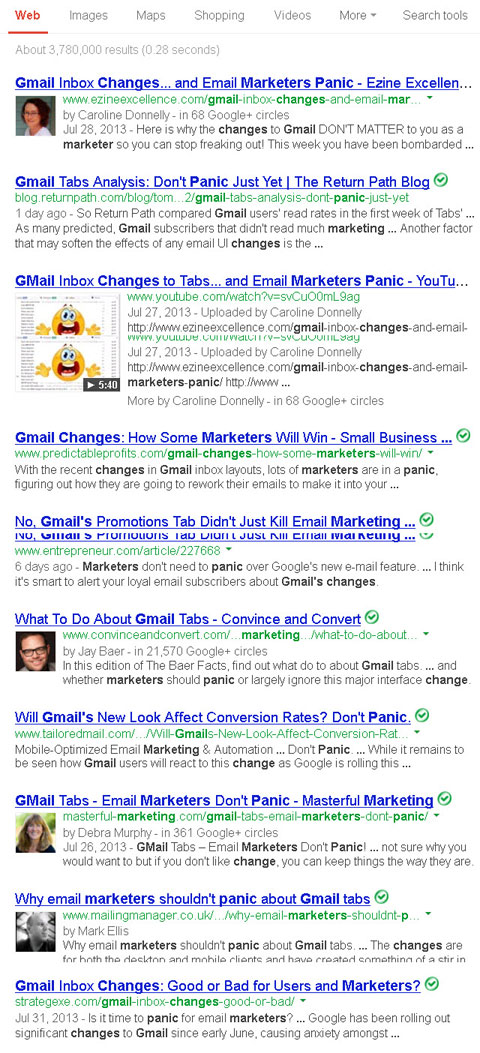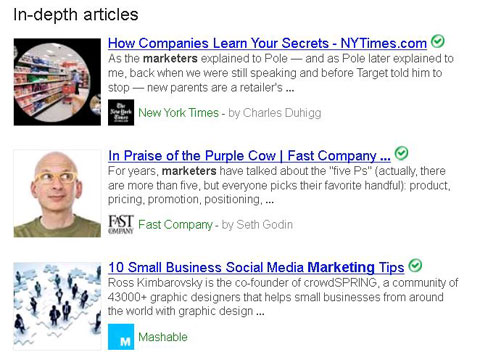
Are You a Panicky Marketer? Do changes to the status quo make you reach for the panic button?
Or, are you like the marketers I know? They are level-headed analytical types with a touch of creativity thrown in. Since the introduction of Gmail’s new tabs, it has become increasingly obvious that I have a sheltered existence when it comes to calm marketers. Who knew that changes to an inbox interface would throw people who are supposed to be problem solvers into wild-eyed hysterics?
When the new inbox option appeared, my first thought was “email marketing just got a little harder.” This is not necessarily a bad thing. Email is so good at generating revenue that people forget it can also improve loyalty, service, and engagement. It is one of the most versatile marketing and service tools available. Optimizing it improves acquisition, retention, sales, service, and integration. The Gmail changes are simply a new challenge that comes with doing business in today’s environment.
Shortly after the post I wrote about the Gmail’s new inbox went live, emails started rolling in from marketers and service managers. There were questions about the effect on marketing strategies, what should be done immediately, what could wait, and how to get a competitive edge. Every message I received was from a professional who simply wanted to evaluate the situation. Contingency planning is part of a good management strategy.
I didn’t realize until a few days later that the Gmail changes triggered panic attacks in marketers near and far. My first glimpse into that world came from an associate who mentioned that I didn’t tell people not to panic in my post. Being oblivious to the possibility, I responded, “Why should I? Marketers don’t panic. They adapt.”
Apparently, I was wrong. I should have said, “The marketers I know don’t panic.” Articles that mention marketers panicking over the Gmail changes keep appearing. A recent Google search for “Gmail changes marketers panic” yielded 3.78 million results as shown in the following image:
Whoa! When I’m wrong, I’m REALLY wrong!
Except that I’m not…
According to the online yammering this is the great marketing panic of ’13. I only have one question…”Where can I find these people who are panicking?” Okay, maybe I have more than one question…”What does a panicking marketer look like?”
Is it this?
Or this?
If changes to the Gmail interface cause panic, what do marketers prone to panic attacks do when something big happens? Please share your experiences because the marketers I know don’t panic. They make contingency plans. They create new segments to watch for trends. They look for new ways to connect with customers because they know every challenge is an opportunity in disguise. They test. And then, they test some more. I believe the marketers that I know represent all marketers. What do you think?




















